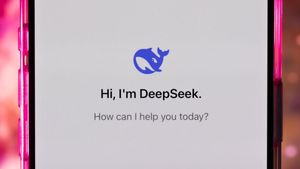DeepSeek, the Chinese AI startup, has shaken the very foundations of the global tech industry with its groundbreaking AI models, which come at shocking low costs, directly challenging the dominance of American giants such as OpenAI and NVIDIA. The release of its R1 model on January 20, 2025, marked the dawn of what is being termed the "DeepSeek shock," sending ripples of concern through Silicon Valley and other tech hubs worldwide.
Historically, the narrative surrounding AI innovation has been anchored around the massive investments made by these American companies, leading to the belief they were irreplaceable leaders; DeepSeek, with its low-budget operations, flips this script entirely. Just last month, after DeepSeek unveiled its models, the tech market faced palpable tension, as NVIDIA’s stock price plunged 17%, alongside declines across the board for companies heavily invested in AI.
The tech world has long been enamored with the idea of colossal investments underpinning AI, yet DeepSeek has proven it is feasible to develop competitive models without exorbitant expenses. According to reports, the annual cost of creating technology comparable to OpenAI’s flagship model can run to over $540 million, but DeepSeek managed to achieve results for less than $6 million, surprising many experts.
"DeepSeek's release of its models forced us to rethink the narrative," stated Steve Sosnick, chief strategist at Interactive Brokers, showcasing the degree to which the U.S. market is re-evaluated following this disruption.
The initial shock from the launch has raised questions not only on the viability of the models but also the sustainability of relying solely on high-cost AI solutions. James Landay, a professor of computer science at Stanford, highlighted this when he remarked, "What impressed more people was how many efficiency techniques they put together in one big system. This suggests we have to not just reconsider models but the strategies we employ to develop them.”
DeepSeek isn’t working with the high-end capabilities of NVIDIA chips like many of its competitors; instead, they rely on lower-resource technologies to perform tasks typically reserved for models bolstered by walloping amounts of funding. The startup, distancing itself from what it describes as the "god complex" of American firms, has managed to advance its position within the global AI ecosystem.
What does this mean for competitors, particularly those in nations like India? The sudden emergence of DeepSeek serves as both wake-up call and catalyst for change among those who find themselves trailing behind the current wave of AI innovation. Questions arise as to whether these countries can catch up – do they have the funding? The vision? The infrastructure? Experts urge immediate action; otherwise, they risk becoming mere consumers rather than innovators.
"We can only rely on ourselves," warned Sun Chenghao of Tsinghua University, echoing the sentiments of many analysts who see the growing urgency for other nations to step up or end up as mere pawns in the global game of AI dominance.
The latest AI arms race is likely to intensify. With DeepSeek now setting the bar for cost-effective AI operations, stakeholders around the world are urged to reassess their strategies. For India, the existing strategies need to evolve rapidly. The government has announced plans to host AI models on domestic servers under the IndiaAI Mission, with aspirations to produce and maintain competitive models with considerable backing.
Union IT minister Ashwini Vaishnaw’s suggestion of creating generative models as part of the $10 billion IndiaAI initiative showcases India’s desire to carve its own niche within the battlefield of AI. It’s clear: the competition narrative has shifted.
With the capability to innovate under such constraints, DeepSeek has compelled ordinary and institutional investors to reconsider where the real values and potentials lie within the AI market. It raises dramatic questions about the future of investment strategies and whether the pursuit of ever-bigger models is truly the right approach moving forward.
DeepSeek’s actions have shown promising hope for many small startups; its approach sets a new industry standard, marking the beginning of mounting opportunities for those willing to embrace and adapt to the new economic environment. This may encourage numerous upcoming AI developers to explore avenues for AI development without feeling the pressures of entering the market only with massive resources, democratizing AI once reserved for only the well-funded.
While observers watch with bated breath to see how DeepSeek’s story evolves, the prevailing hope is for innovation to flourish globally with encouragement for both old and new players alike. A combined efficient development scheme and resolute strategic positioning might well hold the keys to unlocking the next phase of AI technology for not just China, but across all nations seeking to evolve within this fiercely contested industry.



